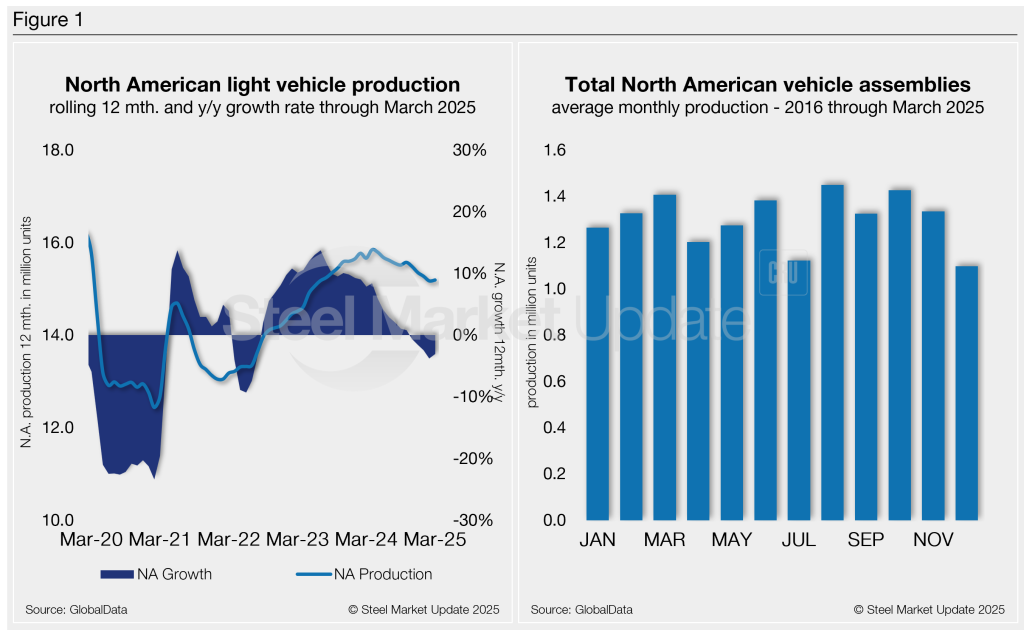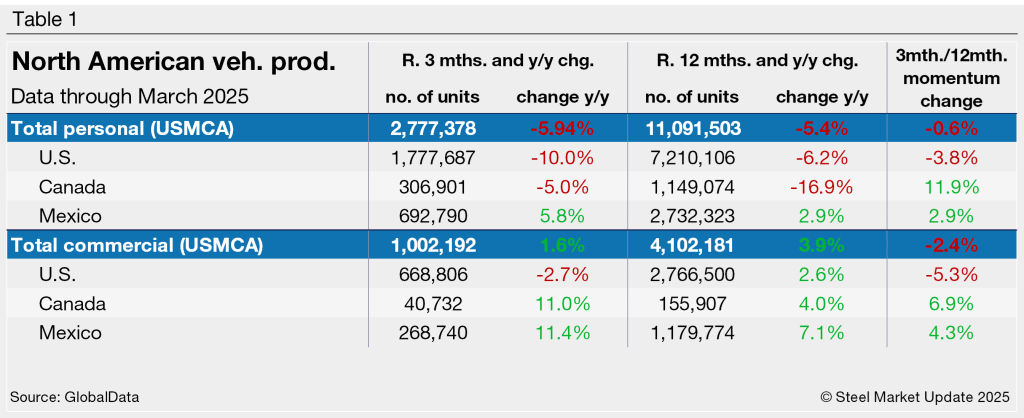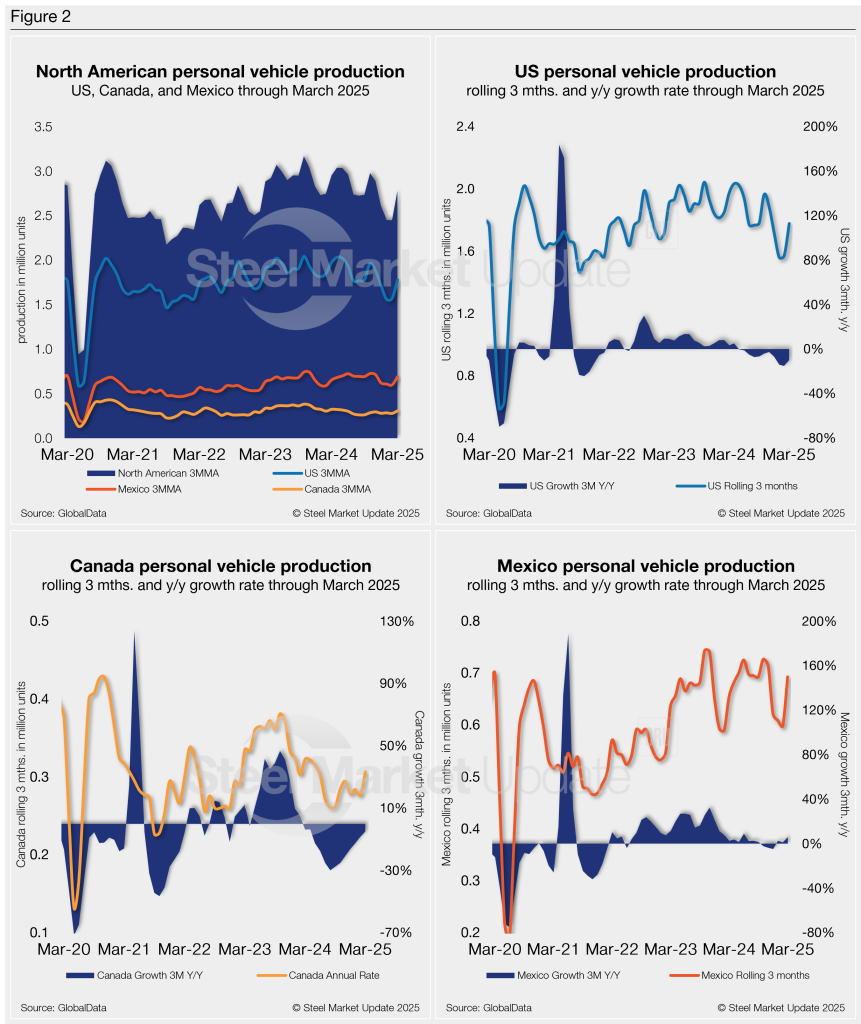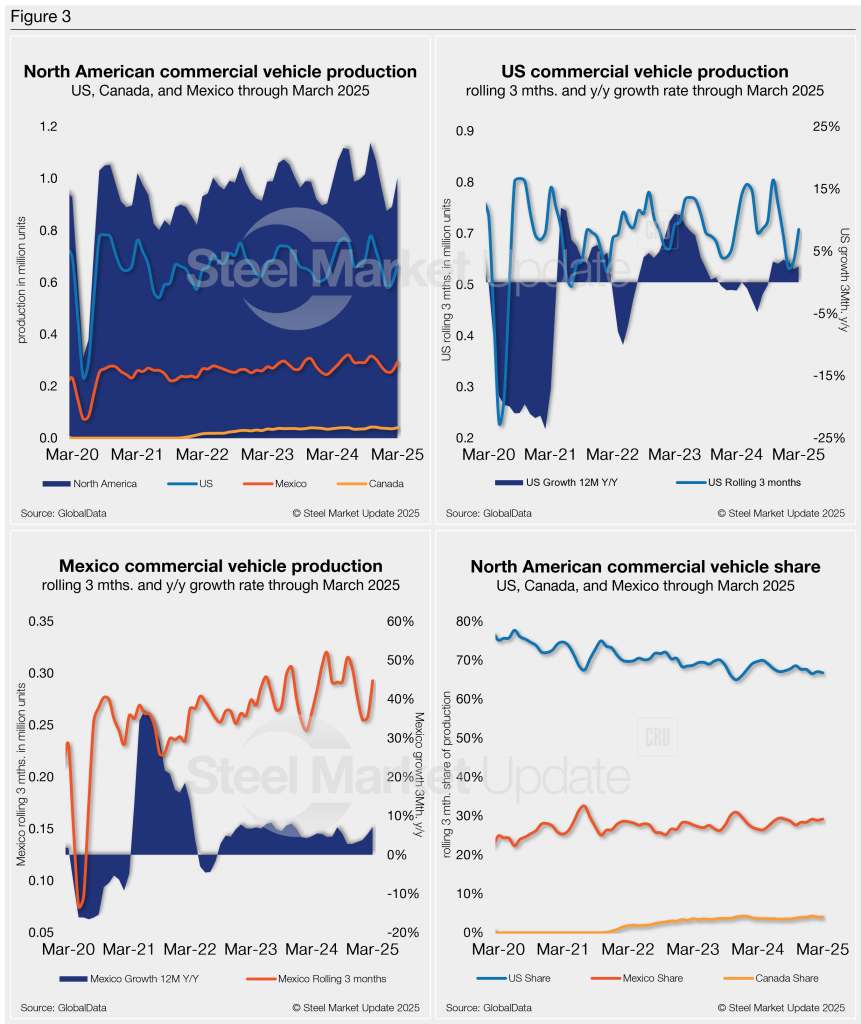Manufacturers/End Users
April 23, 2025
North American auto assemblies up again in March
Written by David Schollaert
North American auto assemblies grew in March, up 8.4% above February. And, according to GlobalData, assemblies were 1.5% higher year on year (y/y).
After a hard drop in December — the worst since July 2021 — assembly numbers have climbed three months in a row. Sentiment remains tempered, though. Carmakers continue downgrading and adjusting vehicle output to meet curtailed market demand.
The USMCA deal (once NAFTA) has held up the North American auto industry for nearly 30 years. But new tariff threats have brought more uncertainty.
The Trump administration hit imported cars with a 25% tariff. Auto parts will follow in the months ahead. And with impending reciprocal tariffs, the road ahead for the auto industry looks rough.
North American vehicle production, including personal and commercial vehicles, totaled 1.363 million units in March, up more than 8% from February’s 1.258 million units and 1.5% ahead of the 1.344 million units produced a year earlier.
Figure 1 below provides a five-year snapshot of North American light-vehicle production since 2020 on a rolling 12-month basis with a y/y growth rate. Also included is a five-year snapshot of average monthly production, which includes seasonality since 2016.

A short-term snapshot of assembly by nation and vehicle type is shown in the table below. It breaks down total North American personal and commercial vehicle production into US, Canadian, and Mexican components. It also includes the three- and 12-month growth rates for each and their momentum change.

For the three months and 12 months through March, the growth rate for total personal and commercial production in the USMCA region is still lagging at a noticeable rate. The momentum shift remains in place since commercial assembly vehicle segments saw an appreciable gain from Q4’24.
Personal vehicle production
The longer-term picture of personal vehicle production across North America is shown below. The charts in Figure 2 show the total personal vehicle production for North America and the total for the US, Canada, and Mexico.
In terms of personal vehicle production, this segment saw a near 9% month-over-month (m/m) increase in March. Assemblies last month totaled 991,084 units, up from 911,285 units in February. It’s still, however, 0.6% below a year earlier.
The US saw a 9.5% m/m production gain, with 56,473 additional units in March. Mexico rebounded and produced 12,655 more units (+5.7%), while Canada’s production was up 10,671 units (+11.3%).
Production share across North America was little changed. The US’ personal vehicle production share of the North American market was 64%, followed by Mexico and Canada at 24.9% and 11.1%, respectively.

Commercial vehicle production
Total commercial vehicle production in North America and the total for each nation within the region are shown in the first chart in Figure 3 on a rolling three-month basis. Commercial vehicle production in the US and Mexico, as well as their y/y growth rates and the production share for each nation in North America, are also shown.
North American commercial vehicle production was also up in March. The region saw a 7.5% m/m increase, with a total of 372,298 units, up from 346,356 in February. March’s output was also 7.4% ahead of last year.
The US saw a 8% m/m rise, with 18,553 additional commercial vehicles assembled in March. Mexico followed, up 5.8% (+5,848 units), while Canada was up 12% (+2.541 units).
The market share across the region was also largely unchanged in February. The US total share was 66.7%, followed by Mexico with 29.2% and Canada with 4.1%.
Mexico exports just under 80% of its light-vehicle production, with the US and Canada as the highest-volume destinations.

Editor’s note
This report is based on data from GlobalData for automotive assemblies in the US, Canada, and Mexico. The breakdown of assemblies is “Personal” (cars for personal use) and “Commercial” (light vehicles with less than 6.0 metric tons gross vehicle weight rating; heavy trucks and buses are not included).







